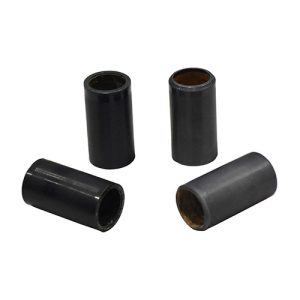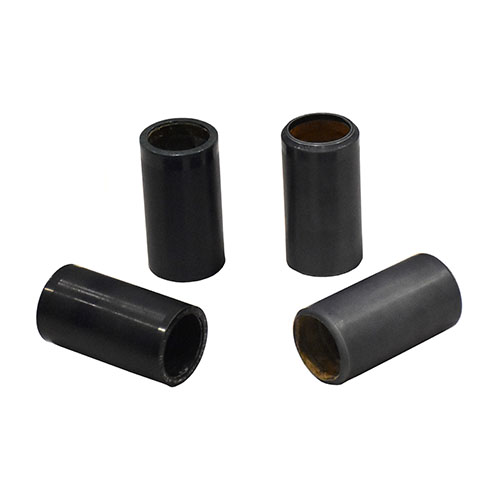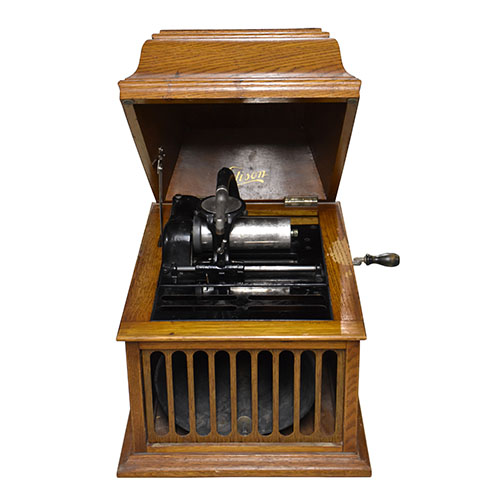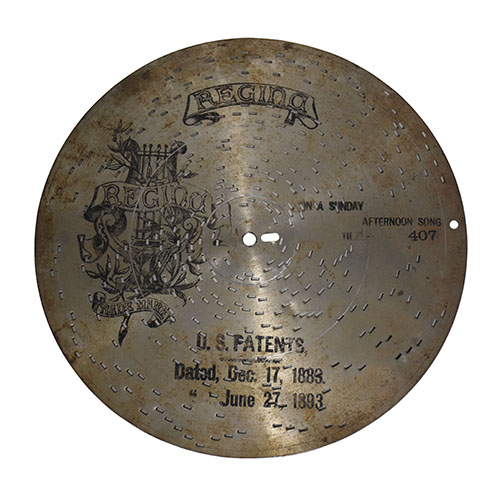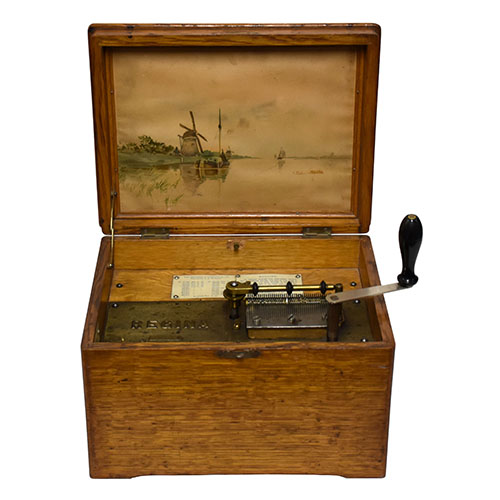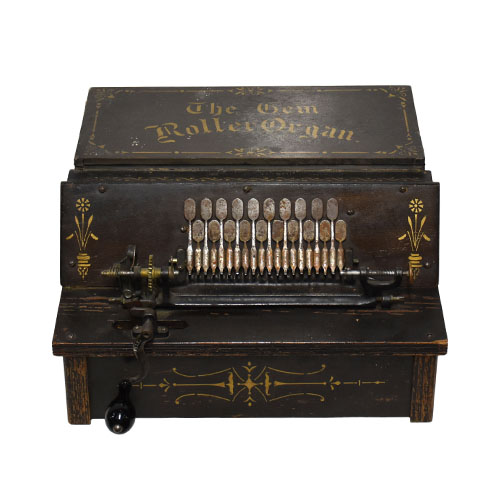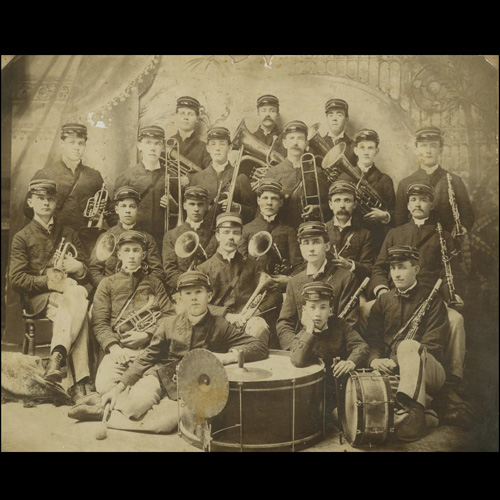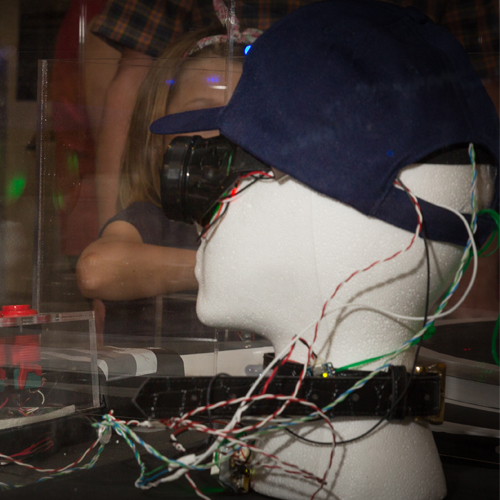The home music industry began in the late 1870s with the creation of tabletop music players known as organettes along with the earliest rendition of Edison’s phonograph. Within the collection are several examples of organettes and early music technology such as music boxes and the Edison cylinder phonograph.
Organettes
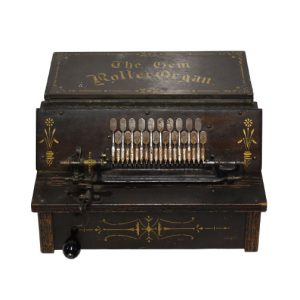 The term organette refers to mechanical free-reed programmable/automatic musical instruments, which were commercially introduced in the late 1870s in both North America and Europe. Organettes were powered by bellows which were powered by a foot pedal or a hand crank. Depending on the complexity of the instrument between 14 and 39 notes could be played. Organettes used a variety of programmed media including perforated paper rolls, perforated cardboard, perforated metal discs or wooden rollers known as cobs. One of the most popular organettes was the Gem Roller Organ.
The term organette refers to mechanical free-reed programmable/automatic musical instruments, which were commercially introduced in the late 1870s in both North America and Europe. Organettes were powered by bellows which were powered by a foot pedal or a hand crank. Depending on the complexity of the instrument between 14 and 39 notes could be played. Organettes used a variety of programmed media including perforated paper rolls, perforated cardboard, perforated metal discs or wooden rollers known as cobs. One of the most popular organettes was the Gem Roller Organ.
The Gem Roller Organ was manufactured under that name by a variety of companies, including Sears & Roebuck, and was the middle-class affordable alternative to a parlour organ. In 1902, Sear & Roebuck sold Gem Roller Organs for $3.25 and there were many musical cobs to choose from. Roller organs used cobs which are wooden cylinders with steel pins, set to play 20 notes. When the pins roll over the valve keys, they produce a song. The roller organ within the collection dates from the turn of the 20th century.

Regina Music Boxes
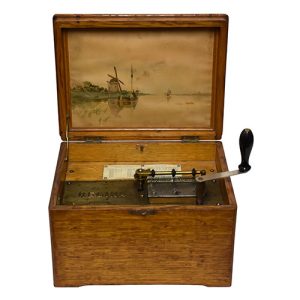 Regina music boxes made their way onto the market in the 1890s. Unlike the Gem Roller Organ that used cobs, Regina music boxes used perforated metal discs which were rolled over a soundboard. The perforations in the discs engage the teeth of a gear and as the gear spins it plucks the tine of a musical comb. Each tine of the comb is tuned to a precise musical pitch. Regina music boxes were renowned for their rich tone as they used two combs. There were several models of music boxes, including tabletop sized to floor models. The discs ranged in size from 8.5 to 27 inches in diameter.
Regina music boxes made their way onto the market in the 1890s. Unlike the Gem Roller Organ that used cobs, Regina music boxes used perforated metal discs which were rolled over a soundboard. The perforations in the discs engage the teeth of a gear and as the gear spins it plucks the tine of a musical comb. Each tine of the comb is tuned to a precise musical pitch. Regina music boxes were renowned for their rich tone as they used two combs. There were several models of music boxes, including tabletop sized to floor models. The discs ranged in size from 8.5 to 27 inches in diameter.
Regina music boxes were more expensive than roller organs but were incredibly popular due to their superior sound. Music boxes were designed for high sound quality, but the cases needed to be pleasing to the eye. Some boxes had carvings while others, like the one in the museum’s collection had a painting inside. Though high quality, Regina could not compete with the phonograph and the company went bankrupt in 1922. The Regina music box in the collection dates from around the turn of the 20th century and uses the smaller 8” discs.
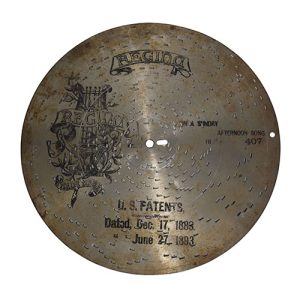
Cylinder Phonographs
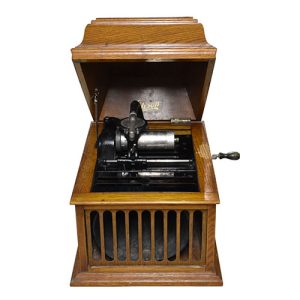 The first cylinder phonographs created by Edison came onto the market in the late 1870s. The original cylinders were made of metal and covered with tin foil. The machines did not take off right away – the cylinders could only withstand a few playbacks and the machines were difficult to operate. In the 1880s Alexander Graham Bell and some associates continued to work on the design created by Edison and made improvements such as using wax rather than foil on the cylinders.
The first cylinder phonographs created by Edison came onto the market in the late 1870s. The original cylinders were made of metal and covered with tin foil. The machines did not take off right away – the cylinders could only withstand a few playbacks and the machines were difficult to operate. In the 1880s Alexander Graham Bell and some associates continued to work on the design created by Edison and made improvements such as using wax rather than foil on the cylinders.
Edison got back into the phonograph game in the late 1880s and released a machine that used wax cylinders that were white and made from ceresin, beeswax, and stearic wax. Machines under the “Edison” brand name were first marketed in 1897. Music from all genres were available and the cylinders played a two-minute song. As other media at the time, in particular the perforated discs, could play a four-minute song, making it hard for cylinder phonographs to compete.
Improvements were made to the cylinders, and the cylinders most associated with Edison phonographs, the Blue Amberol, were introduced in 1912. These were made from celluloid and have a plaster of Paris centre. The celluloid allowed the cylinder to be played hundreds of times without loss of sound quality and could be finely etched, allowing them to play a four-minute song. The players created to use the Blue Amberol cylinders are known as amberolas and featured an internal speaker. In 1913 Edison decided to focus on making disc players as that was what the market favoured, but he continued to manufacture cylinders until his company folded in 1929.
